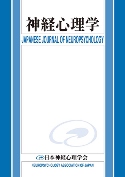Volume 34, Issue 1
Displaying 1-9 of 9 articles from this issue
- |<
- <
- 1
- >
- >|
-
2018 Volume 34 Issue 1 Pages 2-8
Published: March 25, 2018
Released on J-STAGE: April 28, 2018
Download PDF (348K)
-
2018 Volume 34 Issue 1 Pages 9-13
Published: March 25, 2018
Released on J-STAGE: April 28, 2018
Download PDF (261K)
-
2018 Volume 34 Issue 1 Pages 14-15
Published: March 25, 2018
Released on J-STAGE: April 28, 2018
Download PDF (161K)
-
2018 Volume 34 Issue 1 Pages 16-28
Published: March 25, 2018
Released on J-STAGE: April 28, 2018
Download PDF (901K) -
2018 Volume 34 Issue 1 Pages 29-37
Published: March 25, 2018
Released on J-STAGE: April 28, 2018
Download PDF (558K) -
2018 Volume 34 Issue 1 Pages 38-44
Published: March 25, 2018
Released on J-STAGE: April 28, 2018
Download PDF (459K) -
2018 Volume 34 Issue 1 Pages 45-62
Published: March 25, 2018
Released on J-STAGE: April 28, 2018
Download PDF (1200K)
-
2018 Volume 34 Issue 1 Pages 63-73
Published: March 25, 2018
Released on J-STAGE: April 28, 2018
Advance online publication: December 01, 2017Download PDF (714K) -
2018 Volume 34 Issue 1 Pages 74-82
Published: March 25, 2018
Released on J-STAGE: April 28, 2018
Advance online publication: January 24, 2018Download PDF (370K)
- |<
- <
- 1
- >
- >|
